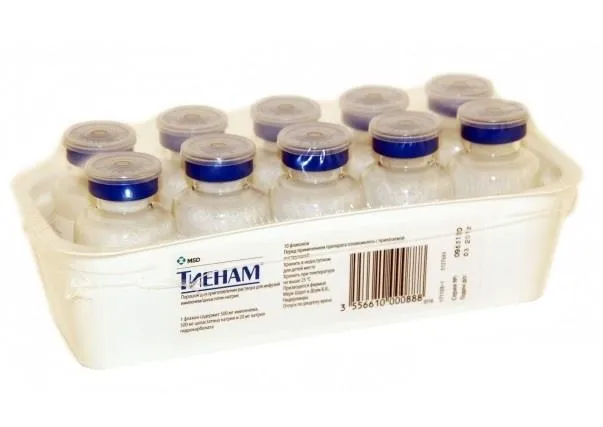Description
Thienam (Imipenem, Cilastatin Sodium) Powder for Solution for Infusion 500 mg Vials
Ingredients
- Thienam contains imipenem and cilastatin sodium as active ingredients.
Dosage
- Thienam is typically administered as a 500 mg solution for infusion. Dosage may vary based on the condition being treated.
Indications
- Thienam is indicated for the treatment of severe infections caused by susceptible strains of bacteria.
Contraindications
- Thienam is contraindicated in patients with a history of hypersensitivity to imipenem, cilastatin, or any component of the formulation.
Directions
- Thienam should be administered as directed by a healthcare provider. It is usually given by intravenous infusion over a specific period of time.
Scientific Evidence
- Studies have shown the efficacy of Thienam in treating various bacterial infections. Research published in the Journal of Antimicrobial Chemotherapy demonstrated the effectiveness of imipenem/cilastatin in combating multidrug-resistant pathogens.
Additional Information
- Thienam is a broad-spectrum antibiotic that works by inhibiting bacterial cell wall synthesis. It is often used in hospital settings for serious infections where other antibiotics have failed. Clinical trials have highlighted the importance of proper dosing and monitoring to prevent the development of resistance.
- Pharmacologically, imipenem inhibits bacterial cell wall synthesis by binding to penicillin-binding proteins, leading to cell lysis. Cilastatin prevents the renal metabolism of imipenem, increasing its concentration in the body.
- In comparative effectiveness studies, Thienam has shown similar or superior efficacy compared to other antibiotics in the treatment of complicated intra-abdominal infections and nosocomial pneumonia.




